ISO Certifications
ISO (International Organization for Standardization) is an independent, non-governmental organisation consisting of 169 national standards bodies. It is responsible for establishing globally recognised standards for materials, processes, and services. ISO standards are prevalent across all industries. However, they are particularly common throughout the construction sector. For instance, ISO 9001 relates to quality management and is regularly used by construction companies to assure customers of their processes. Similarly, ISO 14001 focuses on environmental management systems and demonstrates an organisation’s commitment to environmental sustainability.
Environmental Standards
ISO 14011 is one of the most recognised environmental standards, but there are a host of other influential environmental certifications. LEED (Leadership in Energy and Environmental Design) is a US-based certification recognised around the world. It assesses a project’s sustainability by examining energy efficiency, water use, materials, and overall environmental impact. In the UK, BREEAM (Building Research Establishment Environmental Assessment Method) is a popular alternative. It provides certifications based on similar criteria as LEED. The EPD Certification is a type-III environmental declaration based on a Life Cycle Assessment (LCA) and the ISO 14025 standard. This means the certification takes in the entire life cycle of a product, from material extraction and sourcing to its end life and disposal. The EPD provides a comprehensive picture of a product’s environmental impact, allowing people to compare similar products. However, just because a product has an EPD, it does not mean it is more environmentally friendly than one that doesn’t.
Energy Standards
The most common energy standard is the Energy Performance Certificate (EPC). It uses a red-amber-green traffic light system to measure how energy efficient a building is. The scale runs from A to G, with the A being the most energy efficient (corresponding with green on the traffic light system) and G the most inefficient (red on the traffic light scale). This system is replicated for electrical appliances and similar products, allowing for easy comparisons between products and ensuring energy efficiency is at the forefront of buyers’ minds when making a purchase.
Energy Performance Certificate (EPC)
EPC is the most widely used measurement of energy efficiency in construction and underpins the UK government’s regulation and legislation: worth noting that the UK wants to raise the minimum EPC rating for commercial properties to C by April 2027 and to B by 2030. An EPC evaluates the energy efficiency and carbon emissions of a building. It assesses the operational energy performance of the building, taking into account factors such as heating, cooling, lighting, and ventilation systems. The purpose of an EPC is to provide information to potential buyers, tenants, or users about the energy efficiency of a specific building. The EPC considers a wide variety of factors, including the performance of walls, roofing, and flooring, as well as heating and lighting systems. This makes it a relatively comprehensive assessment. We are often asked about the relationship between EPDs and EPCs, and while they serve different purposes, they both contribute to the broader goal of promoting sustainability and energy efficiency. In fact, the information on energy efficiency or environmental performance of a specific product should be taken into consideration during the specification stage as this may indirectly impact the overall energy performance of the building, its EPC rating, and most importantly whether it remains safe and compliant throughout its lifecycle.
Environmental Product Declaration (EPD)
An EPD provides comprehensive information about the environmental impact of a specific product throughout its life cycle. It includes data on energy consumption, resource use, emissions, and other environmental indicators. EPDs are primarily used to compare and assess the environmental performance of different products in order to make informed decisions during the specification stage. The information on energy efficiency or environmental performance of a specific product should be taken into consideration during the specification stage as this may indirectly impact the overall energy performance of the building, its EPC rating, and most importantly whether it remains safe and compliant throughout its lifecycle.
Fire Safety Performance
In the wake of the Grenfell fire, fire safety regulations have undergone significant changes, and many construction managers and property owners are having to bring their projects and assets into line with new legislation. As such, many specifiers working on remediation projects look for products with relevant fire safety performance certifications. Historically, the BS 476 fire safety standard was the most visible fire certification. However, that has now been supplanted by the BS EN 13501 certification. The EN 13823 and ISO 11925 Ignitability fire resistance tests are also widely used. The BS EN 13501 categorises materials into one of seven classes based on results from the EN 13823 and ISO 11925 tests. The classes range from A1 (non-combustible materials with the highest level of fire resistance) to F (materials with the highest level of combustibility), where: Reaction to Fire Classification ranges from A – non-combustible – to F – high contribution to fire. Non-combustible materials are either classed as A1 or A2. A1 is fully non-combustible and does not progress the fire in any way. This category will categorise the surface spread of flame, where: – A1 – fully non-combustible – no contribution to the fire at all – A1+A2 are non-combustible – B-D is very limited – medium contribution – E-F is high contribution and flammable Smoke Classification (S), within the European Classification, refers to the amount of smoke produced by material within 10 minutes of exposure to fire. This ranges from S1 – S3 and follows the reaction to fire classification, where: – S1 – little to no smoke – S2 – the average amount of smoke – S3 – substantial smoke Droplets/Particles Classification (d) are classified between d0 and d2. These classifications describe the number of flaming droplet particles produced by the material within 10 minutes of being introduced to fire. Flaming droplets allow the fire to move downwards leading to increased spread and injury, where: – d0 – no droplets seen – d1 – some slow dripping droplets – d2 – quite a lot of intense droplets Bringing it all together: put together, these describe the behaviour of a material once exposed to fire. To give you a flavour of how these classifications look we have set out some helpful examples below: – A1 – Non-combustible, this will not contribute to the spread of fire – A2-s2, d0 – Also non-combustible but will produce a bit of smoke if exposed – B-s2, d2 – This will offer a little contribution to the fire but will produce smoke and flaming droplets – F – This is a flammable material that will significantly contribute to the spread of flames We hope this information helps clarify Fire Safety Performance and what to look out for. If you have any questions, please get in touch.
National Standards
In the UK, specifiers will be acquainted with BS (British Standards) certifications. These are set by the BSI (British Standards Institute) and cover various materials and processes. In many cases, national standards are being merged or brought in line with European standards. With this in mind, it is also a good idea to look out for CE markings. These are attached to products sold in the European Economic Area (EEA) and verify that products meet relevant EU standards.
European Standards
The CE certification is arguably the most common and easily recognised European standard. You will find the CE marking on many products sold in European markets, as the EU requires companies to obtain the CE certification for certain goods. The certification indicates that a product meets EU safety, health and environmental protection requirements and has been assessed by the manufacturer or, in some cases, a notified body.
Material-specific Certifications
Depending on the project, specifiers may have experience with material-specific certifications, too. For instance, timber is accredited by the FSC (Forest Stewardship Council). FSC certification guarantees the wood comes from a responsibly managed forest that promotes sustainable and ethical sourcing.
Performance Certifications
There are a whole host of performance certifications that help specifiers make an informed decision about available products. These vary significantly depending on the type of product and what qualities are relevant to its performance. For instance, RYNO® decking and terracing solutions are often put through the BS 7976-2 Pendulum Test and BS EN 16165 standards for slip resistance. These measure the safety of flooring surfaces in regards to slipping and the amount of friction they generate.
Manufacturer & Supplier Certifications
Specifiers should also be aware of manufacturer and supplier certifications. While not recognised by other organisations, these certifications make it easier to identify appropriate products and their performance benefits. For instance, the RYNO INGO® certification is attached to the company’s range of non-combustible products. It reassures specifiers that any product with the IGNO certification complies with (or often exceeds) current building and fire safety regulations.
Remediation
Remediation is the process of altering an existing construction to bring it in line with regulations and ensure compliance. It often addresses safety concerns, such as fire risks and structural integrity issues, but is also important in the context of new environmental legislation. The primary purpose of remediation projects is to eliminate risks to residents, users, the surrounding environment, and the building itself. While property owners may choose to carry out remediation work on risks they or occupants identify, it is more often the result of new governmental legislation and shifting building regulations. The recent changes to fire safety regulations in the wake of the Grenfell Tower tragedy are a good example.
Renovation
Renovation is the process of improving an existing construction and updating its appearance or design. It usually involves updating old, obsolete, or unfashionable elements and replacing them with more contemporary, relevant, and aesthetically pleasing features. In contrast to remediation, renovation projects do not normally aim to rectify specific structural deficiencies or safety concerns. Instead, they are driven by a desire to transform constructions into more desirable, useful, and valuable spaces. With renovation projects, there is often a focus on taking old constructions and making them look and feel new.
Refurbishment
Refurbishment is similar to renovation in many ways, and there can be considerable overlap. However, refurbishment is usually a more extensive and comprehensive process that goes above and beyond renovation. In this sense, refurbishment will often involve an entire redesign or refit. From conducting extensive repairs and deep cleaning a property to redecorating and implementing an entirely new aesthetic, it requires substantial changes to a construction. This is why refurbishment is often used in the context of retail spaces. When a business vacates a property and another moves in, the space needs to be reconfigured to meet the needs of the new occupants. Everything from the electrics to commercial appliances may need to be altered to achieve this.
Retrofit
Retrofitting is about specific upgrades to technology or systems for improved performance without necessarily changing the overall appearance of a building or asset. It involves the process of adding new technology or features to an existing building or structure to improve its performance, energy efficiency, or functionality. Retrofitting may include upgrading components, installing modern equipment, or incorporating new technologies. The primary purpose of retrofitting is to bring an older building or structure up to contemporary standards, particularly in terms of energy efficiency, technological compatibility, or compliance with current regulations.





